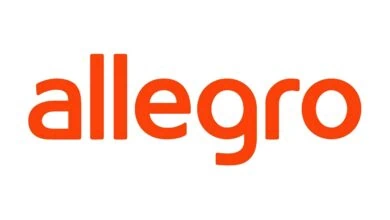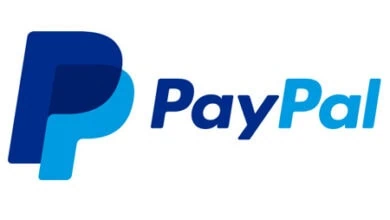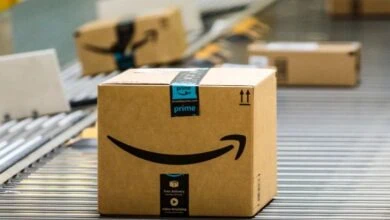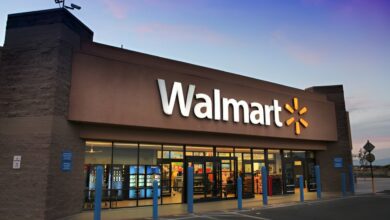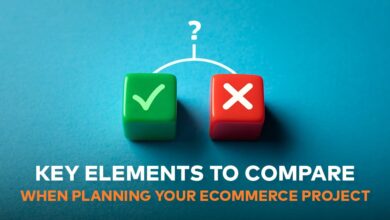Amazon’s FBA fee adjustments – what sellers need to know for the holiday season
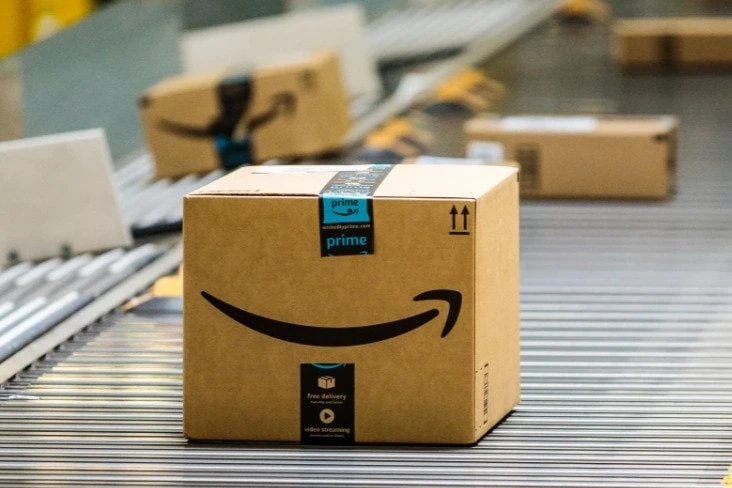
Amazon’s FBA Fee Adjustments are front and center this holiday season, and sellers are right to ask how these changes will ripple through costs, pricing, and customer experience. The big picture is clear enough – most major carriers are implementing peak surcharges, and Amazon is aligning with that industry pattern to keep delivery speed and capacity high during the busiest months of the year. Amazon’s FBA Fee Adjustments sit alongside increased seasonal costs across the logistics ecosystem, which means online merchants will need to plan carefully while shoppers hunt for value. Let’s break down what is changing, how it compares with carrier surcharges, what it means in key European markets, and how sellers can stay resilient and optimistic even as fees rise during peak.
Understanding Amazon’s FBA fee adjustments this holiday season
Amazon’s FBA Fee Adjustments are designed for the holiday period when demand for fast shipping surges and operational costs climb. Amazon is instituting a holiday peak fulfillment fee from October 15 through January 14, 2026 for Fulfillment by Amazon, Remote fulfillment with FBA, Multi-Channel Fulfillment, and Buy with Prime. In practical terms, that window spans late Q4 through the start of Q1, covering the busiest shopping weeks and the post-holiday return rush. The aim is to maintain delivery speed, expand fulfillment capacity, and support strong customer demand during that extended peak. Amazon has also linked the decision to above-average fulfillment and transportation costs that rise across the supply chain during this period.
These changes fit a broader pattern. Similar to major carriers, Amazon is applying a peak fee to help cover increased seasonal costs. Amazon has emphasized that selling partners are incredibly important and that this decision was not made lightly. While any fee increase can feel like a squeeze, the rationale is straightforward – a sustained period of high parcel volume puts pressure on labor, transportation, and customer service, and the peak charge helps keep service levels steady. Amazon’s FBA Fee Adjustments are thus part of a market-wide reality, rather than a standalone change.
For small sellers, the timing may feel especially tough. Buyers factor in total price plus shipping, and the holiday season brings intense price sensitivity as shoppers look for deals and discounts. That pressure means sellers have limited room to offset higher fulfillment costs without careful planning. Still, clarity on dates and scope allows teams to prepare for the peak. Amazon’s FBA Fee Adjustments have a defined start and end, and the fees are confined to specific programs. This makes it possible to map inventory, promotions, and shipping expectations to that calendar so you can protect your margins while maintaining a reliable delivery promise.
Ultimately, the focus should remain on value and trust. During peak, reliable delivery is part of the product equation. Amazon’s FBA Fee Adjustments are intended to support delivery speed and capacity when it matters most. By aligning your operations to this reality and by staying transparent with customers about shipping timeframes, you can keep conversion strong and returns low even as the cost side grows more complex.
Comparing peak fees across Amazon, USPS, UPS, and FedEx
Amazon’s FBA Fee Adjustments are best understood in the context of wider peak surcharges across the shipping landscape. USPS is instituting peak rates beginning October 5 through January 18, 2026 for both retail and commercial domestic competitive parcels that include Priority Mail Express, Priority Mail, USPS Ground Advantage, and Parcel Select. UPS published peak-season demand surcharges in late August that take effect from September 28 through January 16, 2026. FedEx is instituting peak demand surcharges from September 29 through January 18, 2026. Against that backdrop, Amazon is instituting holiday peak fulfillment fees from October 15 through January 14, 2026 that apply to Fulfillment by Amazon, Remote fulfillment with FBA, Multi-Channel Fulfillment, and Buy with Prime.
What stands out is how tightly the dates cluster across providers. UPS and FedEx start in late September, USPS begins in early October, and Amazon’s peak window begins in mid-October. The end dates also remain close, stretching into mid-January when post-holiday activity settles. The alignment suggests a shared expectation of sustained demand and operational strain throughout the entire holiday cycle. Amazon’s FBA Fee Adjustments sit within that same band, shaping a common planning horizon for merchants who rely on multiple carriers and fulfillment programs.
Consumers, meanwhile, are likely to continue looking for deals during this timeframe. According to Mastercard Economics Institute, shoppers in 2025 will search for value amid broader economic uncertainty. They may choose to buy despite tariff-related price increases, trade down to cheaper goods, or shift spending to services or other goods that are less exposed to tariffs. That behavioral context reinforces the need for thoughtful pricing and promotion. When shipping and fulfillment fees rise across the board, customers scrutinize total landed cost more closely, and small sellers in particular have limited negotiating power with carriers.
In short, the market is moving in lockstep. Amazon’s FBA Fee Adjustments reflect the same seasonal dynamics that drive USPS, UPS, and FedEx surcharges. Knowing the timelines upfront helps sellers make practical choices about inventory flow, delivery promises, and promotional calendars. This coordination can be a planning asset. When you can anticipate peak fees across your shipping mix, you are better positioned to shape customer expectations and protect margins, while still offering the speed and reliability that holiday shoppers expect.
Regional details in the United Kingdom and Germany for FBA surcharges
For sellers focused on Europe, Amazon’s FBA Fee Adjustments include specific guidance for the United Kingdom and Germany. Amazon has informed fulfillment service users in these markets about an additional holiday season fee that applies from mid-October to mid-January. The surcharge is intended to ensure that delivery speed, fulfillment capacity, and customer service remain at a high level during the busiest period. While the exact fee may vary, Amazon has provided average figures on Seller Central for each country, and it has clarified some key exemptions.
In the United Kingdom, the average holiday peak fulfillment fee is 10 pence per parcel item and 5 pence per large or extra-large envelope item. In Germany, Amazon has communicated an average surcharge of 19 euro cents. Importantly, the extra fee will not apply to oversize or low-price FBA items. These details help sellers estimate the potential impact on per-unit costs and evaluate how product size tiers might influence overall margin during the peak window. Amazon’s FBA Fee Adjustments therefore carry specific operational implications for catalog mix in both the United Kingdom and Germany.
The broader logistics context in Germany also matters. DHL has historically applied seasonal surcharges, and this year it will add an extra fee during two peak weeks when customers will pay 69 cents more than at other times of the year. This aligns with Amazon’s explanation that the entire industry experiences increased operational costs over the festive season. It also underscores the length and intensity of Amazon’s holiday window, which is comparatively long, spanning from mid-October into mid-January.
Market context provides another lens. Last year, Amazon outpaced ecommerce market growth in both Germany and the United Kingdom, with revenue reaching 39.6 billion euros in Germany and 36.7 billion euros in the United Kingdom. Growth of 8.7 percent in Germany and 12.7 percent in the United Kingdom shows strong momentum in these key markets. For sellers, that momentum can be encouraging. Amazon’s FBA Fee Adjustments may add a modest per-unit cost during peak, yet the overall demand environment remains robust. With careful planning around the timing and scope of the fees, European sellers can keep their offers competitive while leaning into the reach and reliability of Amazon’s fulfillment network.
How shifting shopper behavior impacts pricing and shipping choices
Holiday demand is only part of the story. Shopper behavior is evolving, and it directly intersects with Amazon’s FBA Fee Adjustments. Mastercard Economics Institute reports that in 2025, holiday shoppers will search for value amid broader economic uncertainty. In response to tariff-related price increases, customers may take one of three paths. They may buy anyway, which would boost nominal sales growth. They may trade down to cheaper goods. Or they may redirect spending to services or other goods that are more insulated from tariffs. This mix of choices shapes how sellers think about pricing, merchandising, and shipping promises during the peak-fee window.
At the same time, buyers factor in price plus shipping when deciding what to purchase. With USPS, UPS, and FedEx instituting peak demand surcharges, and with Amazon applying holiday peak fulfillment fees, the total landed cost becomes more salient. Small sellers face a special challenge here because they have limited power to negotiate with carriers. That makes clarity and communication even more important. By setting honest delivery expectations and aligning promotions with fulfillment timelines, you reduce friction at checkout and lower the risk of post-purchase disappointment.
Another dynamic to watch is the role of speed in perceived value. Amazon’s FBA Fee Adjustments are intended to protect delivery speed, expand capacity, and uphold customer service when volumes spike. For many shoppers, fast and predictable delivery is worth a little more during the holidays, especially for gifts. Sellers who account for the peak-fee window and plan their pricing and inventory accordingly can sustain conversion even as cost inputs rise. That does not require extreme changes. It requires timely awareness and a steady hand when making decisions about catalog mix and promotional cadence within the fee window.
Ultimately, success rests on meeting value expectations while navigating higher seasonal costs. The fee timelines are known. The consumer lens is known. Amazon’s FBA Fee Adjustments, combined with carrier surcharges, create a high-stakes period that rewards preparation. Focus on what you control – product selection that resonates with value-seeking shoppers, clear shipping promises, and dependable fulfillment paths through FBA, Remote fulfillment with FBA, Multi-Channel Fulfillment, or Buy with Prime. With those pillars in place, you can lean into demand rather than fear the fee environment.
Action steps to prepare for the holiday peak without hurting customer experience
Planning is your best defense when Amazon’s FBA Fee Adjustments go into effect. Start by anchoring your calendar to the peak-fee windows that are already confirmed. USPS begins peak rates on October 5 and runs through January 18, 2026. UPS runs from September 28 through January 16, 2026. FedEx runs from September 29 through January 18, 2026. Amazon’s holiday peak fulfillment fees apply from October 15 through January 14, 2026 and span Fulfillment by Amazon, Remote fulfillment with FBA, Multi-Channel Fulfillment, and Buy with Prime. With these dates in hand, align inventory arrivals, merchandising pushes, and promotional periods so your operational tempo matches the realities of shipping and fulfillment capacity.
Next, zoom in on markets where you sell through Amazon’s European stores. Amazon’s FBA Fee Adjustments include average surcharges in the United Kingdom and Germany that are small per unit yet meaningful at scale. In the United Kingdom, the average is 10 pence per parcel and 5 pence per large or extra-large envelope. In Germany, the average is 19 euro cents. Remember that oversize and low-price FBA items are exempt. That exception can influence your holiday mix and packaging decisions, especially if part of your catalog straddles item size thresholds.
Keep the consumer lens front and center. According to Mastercard Economics Institute, shoppers will search for value and may trade down or reallocate spending in the face of price pressures. Because buyers weigh price plus shipping, the path to trust is clear communication. Be explicit about delivery windows that account for peak. Emphasize dependable fulfillment. Consider how you frame value through bundles, comparable alternatives, and shipping clarity without overpromising. This is not about inventing new offers. It is about aligning your message with what the market will reward during peak.
Finally, remember the purpose behind Amazon’s FBA Fee Adjustments. The fees are intended to sustain delivery speed and expand capacity when it matters most. By coordinating your operations with those goals, you help ensure that customers receive a consistent experience even as the system absorbs holiday volume. When carriers from USPS to UPS and FedEx are all in peak mode, reliability becomes a differentiator. Your planning turns a seasonal headwind into a managed variable. With foresight and a steady plan, you can navigate the fees, keep customers happy, and finish the season stronger.





